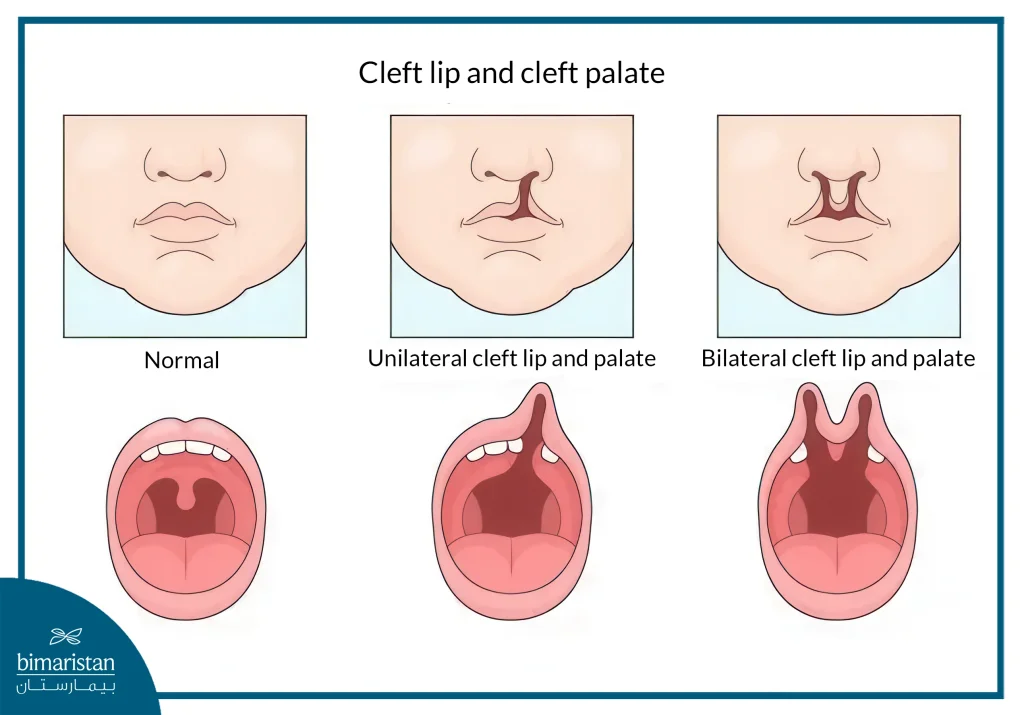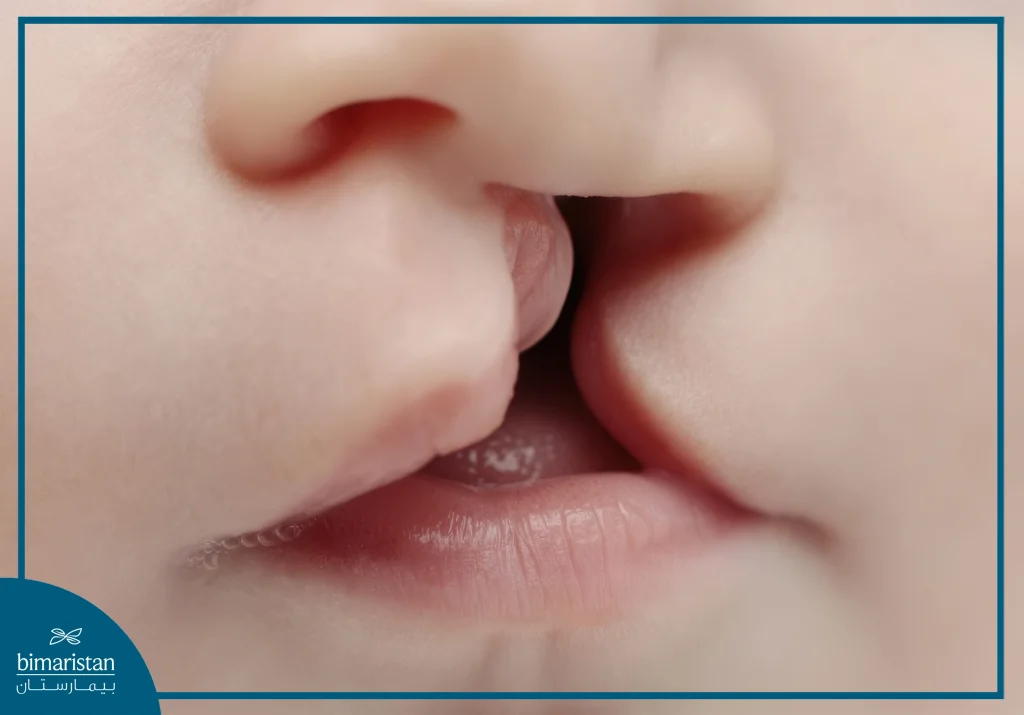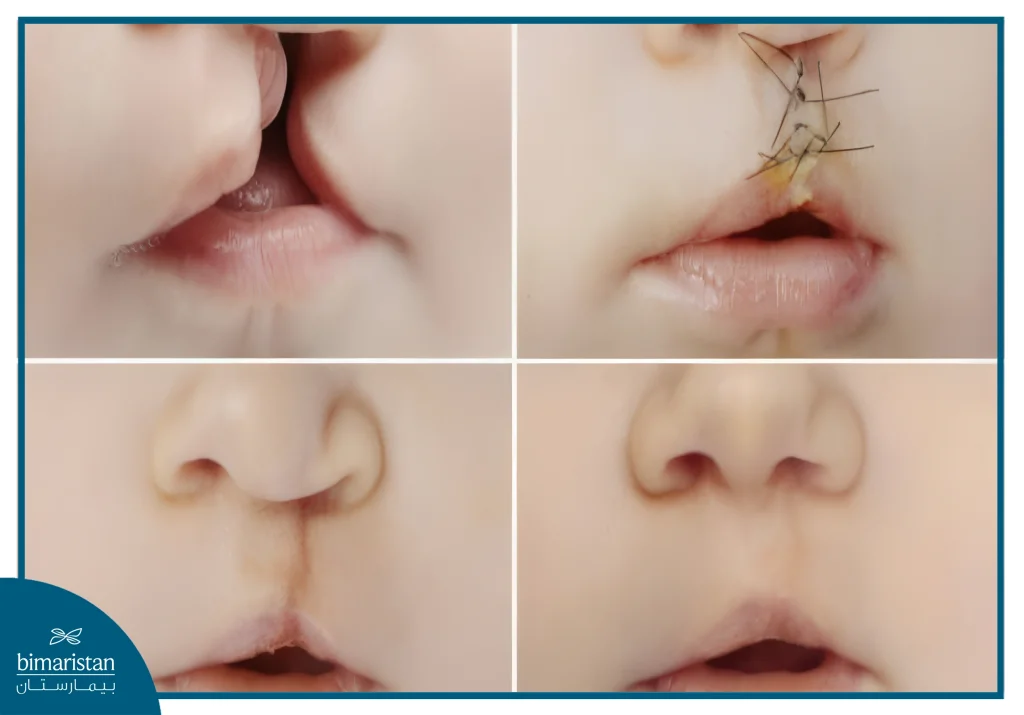Cleft lip and palate are among the most common congenital birth defects. They require urgent surgical treatment in most cases, and several causes are involved. This article discusses the causes and available surgical treatments for cleft palate and lip in Turkey, as well as more.
Some children are born with congenital defects in the mouth and lips. The most common of these defects is a cleft lip, which may be accompanied by a cleft palate, not just the lip.
These openings occur when fetuses improperly fuse facial tissues and lips. This results in their birth with openings in the upper lip, known as a cleft lip and upper palate.
This is called an orofacial cleft and is present from birth.
Giving birth to a baby with a cleft lip is a major fear for the mother, especially as it causes breastfeeding difficulties. However, the good news is that these deformities can be repaired, closing the gaps between the cleft jaw and lip.
Cleft palate and lip can be corrected through a series of surgeries aimed at restoring normal function and shape to the mouth and attempting to restore normal features with minimal scarring.
What is meant by cleft lip?
The lip begins to form in fetuses during the fourth to seventh week of pregnancy. During the growth and differentiation process, a group of cells grows and divides on both sides to form the newborn’s face.
The fusion of tissues helps create features.
The failure of this fusion causes a congenital defect called a cleft lip. It may be small or large, extending into the nose.
While the throat, or what is known as the larynx, develops between the sixth and ninth weeks of pregnancy, a cleft palate occurs for the same reason, which is the failure of the tissues of the throat to fuse with the roof of the mouth between the right and left sides. This cleft may be in the front, back, or both.

Openings and clefts in an infant’s upper lip or palate can be noticed immediately after birth.
It resembles the shape of a rabbit’s lips. It can occur in several forms, including:
- A cleft in the upper lip on one or both sides, resembling a rabbit’s mouth.
- The cleft extends from the top of the lip to the gums and the top of the palate and may extend to the bottom of the nose, leaving both the nasal and oral cavities open to each other.
- The palate roof may be cleft, but there are no apparent birth defects.
- In a few cases, the opening may be in the soft tissue of the palate, i.e., on the back lining of the inner oral cavity.
- This condition is not detected and diagnosed until other symptoms begin.
What are the symptoms of cleft palate and lip?
Children born with a cleft palate and lip suffer from numerous problems. In addition to their abnormal appearance, the openings in the upper lip and palate cause:
- Difficulty breastfeeding and eating later in life.
- Recurrent ear and nose infections and inflammation.
- Closure of the ear due to ear wax due to frequent inflammation, which affects hearing development.
- Improper tooth development, making them more susceptible to tartar buildup and crooked teeth.
- Difficulty pronouncing words and nasal speech sounds as the child grows older.
The good news is that most of these problems improve after corrective surgery, and speech and language therapy can also be performed.
What are the causes of a cleft lip and palate?
A cleft palate and lip occurs when the central facial tissues fail to fuse together in the throat or lips, resulting in an opening.
The cause of cleft lip and palate is unknown, and there is no clear cause to date.
Many doctors believe that several factors contribute to women giving birth to babies with cleft palate and lip.

A combination of genetic and environmental factors likely contributes to the development of cleft palate and lip. Certain behaviors during pregnancy may activate certain genes, which, in turn, lead to failure of the central fusion of the fetus’s palate and lip.
These behaviors include:
Smoking, use of certain medications, drinking alcohol, or exposure to harmful radiation.
However, there is likely a genetic component, which may be from either the father or the mother.
The genetics may be independent and not include any symptoms of another syndrome, or they may be part of a combination of genetic problems.
These genes must be stimulated by various environmental conditions, which are called risk factors.
Risk factors for cleft lip and palate
There are several factors that can increase the likelihood of giving birth to a child with a cleft palate and lip, including:
- Pregnant women are being exposed to harmful substances such as cigarettes, alcohol, and medications.
Women who smoke and drink alcohol are more likely to develop cleft lip and palate. - Family heredity: A family history of cleft lip and palate in both parents, whether in the father’s or mother’s family, increases the likelihood of passing on the cleft palate gene to the child.
- Having chronic diabetes or being diagnosed with diabetes before pregnancy increases the risk of fetal abnormalities.
Women with diabetes are more likely to give birth to a fetus with cleft palate and lip than others. - Women diagnosed with epilepsy or depression who regularly take their medications should be discontinued, as some of these medications can cause abnormalities if taken during the first three months of pregnancy.
- Women who are severely obese.
A link has been found between the birth of children with birth defects such as cleft lip and cleft palate and maternal obesity.
The risk of cleft lip is higher in male fetuses than in female fetuses. Cleft lip, with or without cleft palate, is also more common in certain syndromes, such as DiGeorge syndrome (22q11 deletion).
How can cleft lip and palate be prevented?
When a child is born with a cleft palate or lip, parents are concerned, fearing that their children may also have the same birth defect.
The possibility of recurrence of the mouth and throat defect cannot be ruled out, but the incidence is low, ranging from 2 to 8%.
It is difficult to prevent cleft lip and palate, but there are a number of tips that can reduce the risk of developing cleft lip and palate, including:
- If you think you may be pregnant or are planning to become pregnant in the near future, it is best to seek medical advice.
Genetic testing, blood sugar testing, and body mass index (BMI) can help you avoid and control various risk factors. - If you have epilepsy, you should adjust your medications and request a change to medications that are less risky to the fetus.
This is not only important and protects against cleft lip and palate but also reduces the risk of many birth defects. - You should take essential vitamins before and during your pregnancy. Folic acid is essential and important for protecting against facial and spinal deformities.
- Quit smoking and drinking alcohol.
How are cleft lip and cleft palate diagnosed?
Abnormal cleft lip and palate clefts are often noticed after birth.
The upper lip is shaped like a notch or cleft lip and may also be accompanied by openings in the palate.
Ultrasound imaging of fetuses in the womb helps diagnose abnormalities in utero, and no special tests are required.
Doctors usually schedule an ultrasound examination for abnormalities during the second half of a woman’s pregnancy, which diagnoses a baby with a cleft lip.
The doctor notices a defect and asymmetry between the two halves of the upper lip.
A cleft lip is easy to identify and diagnose with an ultrasound examination, but a cleft palate can be diagnosed later and is more difficult to see, especially if it is located on the inner part of the palate.
If your current child is not your first diagnosed with cleft palate and lip, your doctor may request a semen sample test to rule out a complex inheritance within known genetic syndromes.
He may also suggest genetic testing if you are planning future pregnancies.
A routine newborn examination confirms a child with oral and palate abnormalities. The child is then referred to a specialist to learn about available cleft lip and palate treatment options and answer any parental questions.
Cleft lip and palate treatment in Turkey
Treatment for cleft lip and palate is complex and involves several aspects, most notably helping babies breastfeed and eat, reducing hearing problems and recurrent infections, improving their appearance, and bringing their facial shape closer to normal.
A newborn may not be able to breastfeed like other infants, and special bottles must be used for feeding, especially for those with cleft palates.
Many doctors and specialists are involved in treating cleft lip and palate. Children require a medical team of doctors and specialists working together to achieve optimal treatment. These include:
- Otorhinolaryngologists
- Oral and maxillofacial surgeons
- Orthodontists to treat jaw and dental problems associated with cleft lip and palate
- Pediatric surgeons
- Speech and hearing therapists
- Genetics experts
- Psychologists and social workers
The focus should be on correcting the oral defect through surgical interventions and rehabilitating all problems associated with the cleft lip.
Cleft lip and palate surgery in Turkey
The surgical procedure varies depending on the infant’s condition.
The appropriate age for cleft lip surgery also varies. Some require immediate surgery, while others may wait until 18 months of age.
Surgical correction is necessary to modify the shape of the face and improve breathing, feeding, hearing, and other basic functions.

Cleft lip and cleft palate correction occurs in the following sequence:
- Closing the cleft lip within the first six months.
- Reconstructing the cleft palate within a maximum of 12 months, preferably as soon as possible.
- Subsequent surgeries are performed as needed throughout the child’s growth and development until adulthood.
Surgical intervention is essential and indispensable for correcting cleft lip and palate, but it can be fraught with several complications, such as:
Damage to peripheral nerves supplying sensation, scarring from corrective surgery, and damage to blood vessels, which may be accompanied by bleeding.
Dealing with cleft lip complications
Other problems that occur with cleft lip and palate cannot be ignored. Doctors are keen to guide parents toward practices that help address these issues.
These guidelines include:
- Using a special bottle for feeding, taking care to reduce the amount of milk to prevent your child from becoming tired during feeding.
- Enrolling in speech therapy programs.
- Regular follow-ups with a dentist, timely fitting of braces, and consulting with them about maintaining oral and dental health.
- Treating ear infections and monitoring their complications.
- Requesting a consultation with an audiologist about the child’s need for hearing aids.
- Community integration and support for parents and children to help them accept their appearance and provide psychological support.
Correct Cleft Lip with Expert Surgeons at Bimaristan!
Get a personalized consultation with our top specialists. Contact us now on WhatsApp!
Sources:
